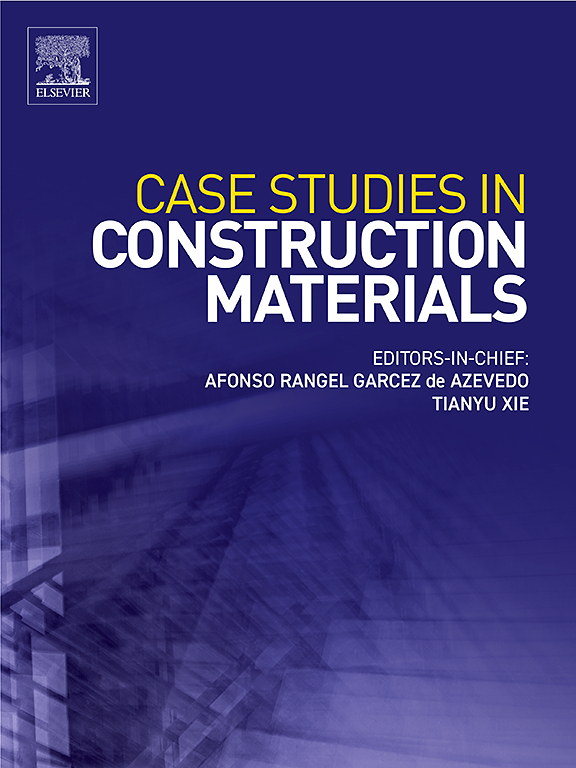在透水混凝土表面处理中吸收纳米石墨烯以提高铺装性能
IF 6.6
2区 工程技术
Q1 CONSTRUCTION & BUILDING TECHNOLOGY
引用次数: 0
摘要
本研究旨在评估纳米石墨烯溶液表面处理对透水混凝土铺装旗(PC铺装旗)性能的影响。研究了四种不同的应用纳米石墨烯溶液的方法:喷涂、浸没、双重浸没和涂刷。根据EN 1339的规定,测试了PC铺路旗帜的性能,包括弯曲强度/断裂载荷,吸水率,耐磨性,未抛光的防滑值(USRV)以及孔隙率和渗透性。为了帮助解释结果,进行了扫描电镜分析和光学显微镜。综上所示,纳米石墨烯溶液对PC铺路旗进行表面处理后,其抗弯强度/断裂载荷适度增加,对USRV和耐磨性的影响可以忽略不计,同时降低了吸水率、总孔隙率和渗透率。光学显微镜图像显示,纳米石墨烯处理使PC铺路旗表面光滑,密封并降低了开放孔隙率。密封表面解释了观察到的吸水率降低,而开放孔隙度的降低解释了总孔隙度的降低,从而解释了吸水率和渗透率的降低。显微照片进一步证明了纳米石墨烯和表面碳的存在所带来的机械强度和孔隙度的变化。所有样品中均存在细长孔隙,喷射样品中最大。本文章由计算机程序翻译,如有差异,请以英文原文为准。
Assimilating nanographene into the pervious concrete - surface treatment for enhanced paving performance
This research aims to assess the impact of surface treatment with a nanographene solution on the properties of pervious concrete paving flags (PC paving flags). Four different methods of applying the nanographene solution were examined: spraying, submerging, double submerging, and brushing. The properties of the PC paving flags, as specified by EN 1339, were tested, including bending strength/breaking load, water absorption, abrasion resistance, unpolished slip resistance value (USRV) as well as porosity and permeability. To aid in the interpretation of the results, SEM analysis and optical microscopy were conducted. It is concluded that the surface treatment of PC paving flags with the nanographene solution resulted in a moderate increase in bending strength/breaking load and had a negligible impact on USRV and abrasion resistance values while reducing water absorption, total porosity, and permeability. Optical microscope images revealed that the nanographene treatment smoothed the surface of the PC paving flags sealing it and reducing open porosity. The sealed surface explained the observed reduction in water absorption while reduced open porosity clarified the reduction in total porosity and consequently, water absorption and permeability. The micrographics showed further evidence of the changes in mechanical strength and porosity introduced with nanographene and the presence of carbon on the surface. The elongated pores were present in all the samples, being largest in the sprayed sample.
求助全文
通过发布文献求助,成功后即可免费获取论文全文。
去求助
来源期刊

Case Studies in Construction Materials
Multiple-
CiteScore
7.60
自引率
19.40%
发文量
842
审稿时长
63 days
期刊介绍:
Case Studies in Construction Materials provides a forum for the rapid publication of short, structured Case Studies on construction materials. In addition, the journal also publishes related Short Communications, Full length research article and Comprehensive review papers (by invitation).
The journal will provide an essential compendium of case studies for practicing engineers, designers, researchers and other practitioners who are interested in all aspects construction materials. The journal will publish new and novel case studies, but will also provide a forum for the publication of high quality descriptions of classic construction material problems and solutions.
 求助内容:
求助内容: 应助结果提醒方式:
应助结果提醒方式:


